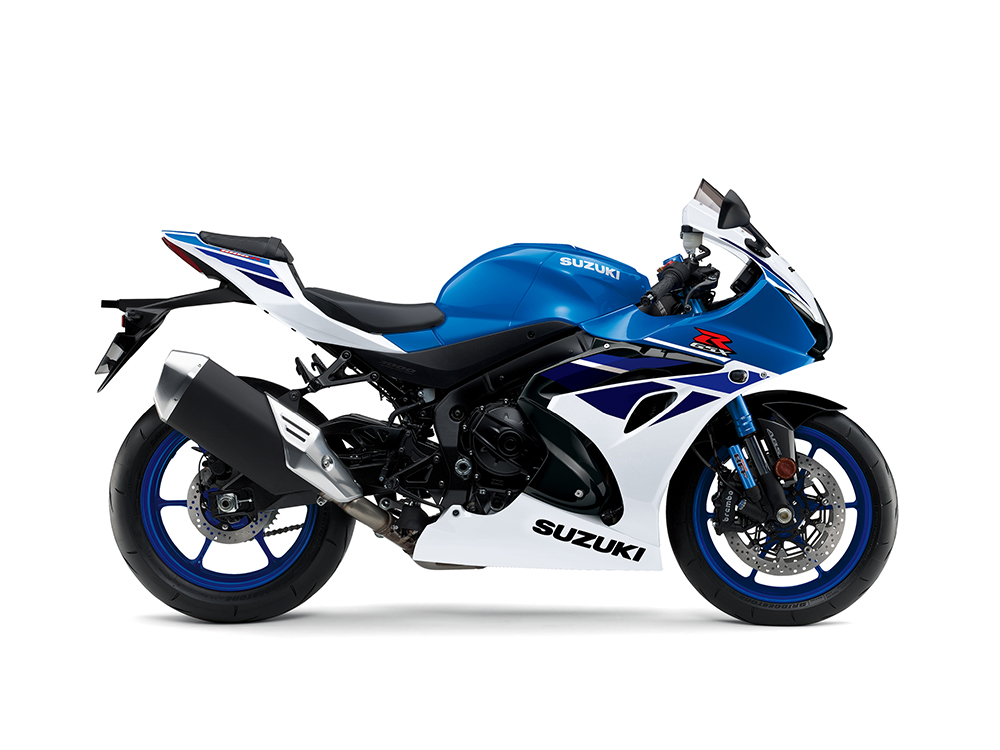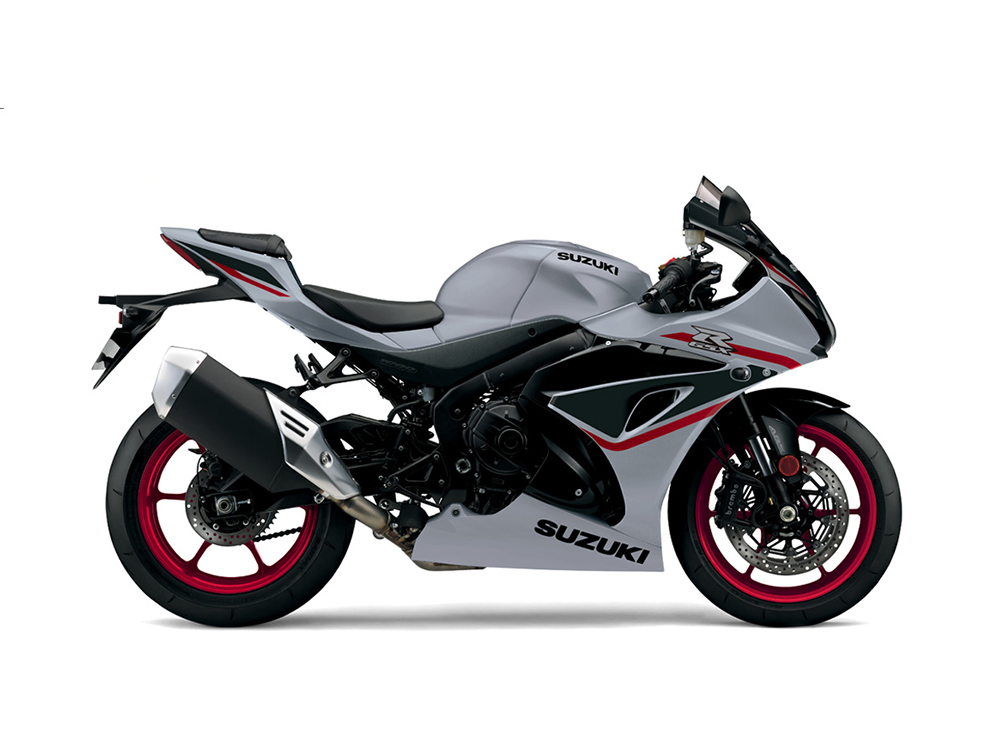Evolve or die: the Darwinist theory of life has never been so accurate when it comes to Superbikes. So, for 2019, the Suzuki GSX-R 1000 R has got some new stuff in the braking and chassis department. ZA Bikers went to thoroughly test ride it around the French WSBK racetrack of Magny-Cours.
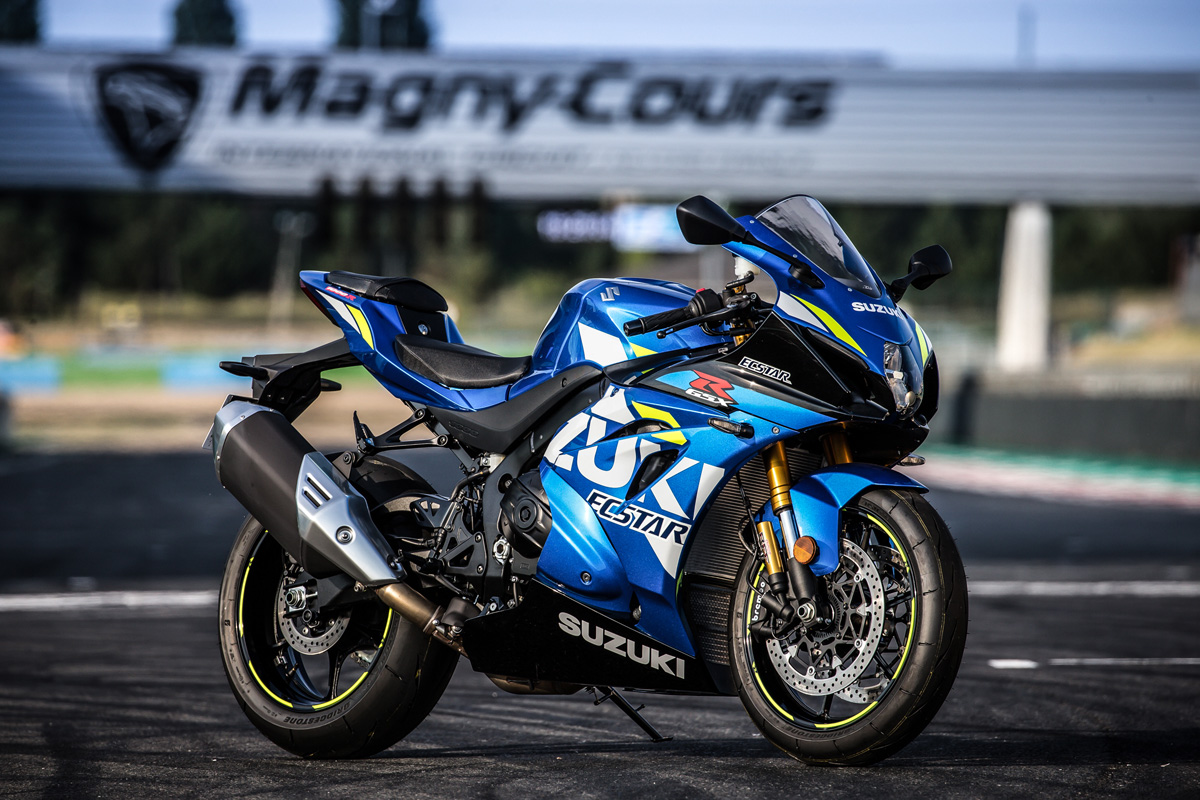
You can classify stuff in life in two categories. There are things that you like and things that you don’t like. On my side, I’d never kind of liked the French racetrack of Magny-Cours. I’ve been there plenty of times though. I’ve seen some of the most intense racing, like for instance, when James Toseland took the WSBK title over home-ground racer Regis Laconi during the last round of the last race of the 2004 season on a Ducati 999. Magny-Cours may be a proper first-class racetrack (it once qualified to get F1 homologation and is 4411 metres long), it looks pretty flat to me and is not challenging like Kyalami, for instance.
Ok, I reckon I started to like Magny-Cours when I did an “endurance-style night riding school” aboard an Aprilia 1100 Tuono V4 and I realised it was much more technical than I thought. But I loved the experience and as a result, and I started to love the track.
On the other hand, there are things that you like: the Suzuki GSX-R has always been one of those for me. As a privileged member of the biking community, I’ve been lucky enough to test ride most of the genealogy, including iconic models such as the ’85 750, the ’89 RR version, the ’91 1100 and nearly all of the latest generations since 2000.
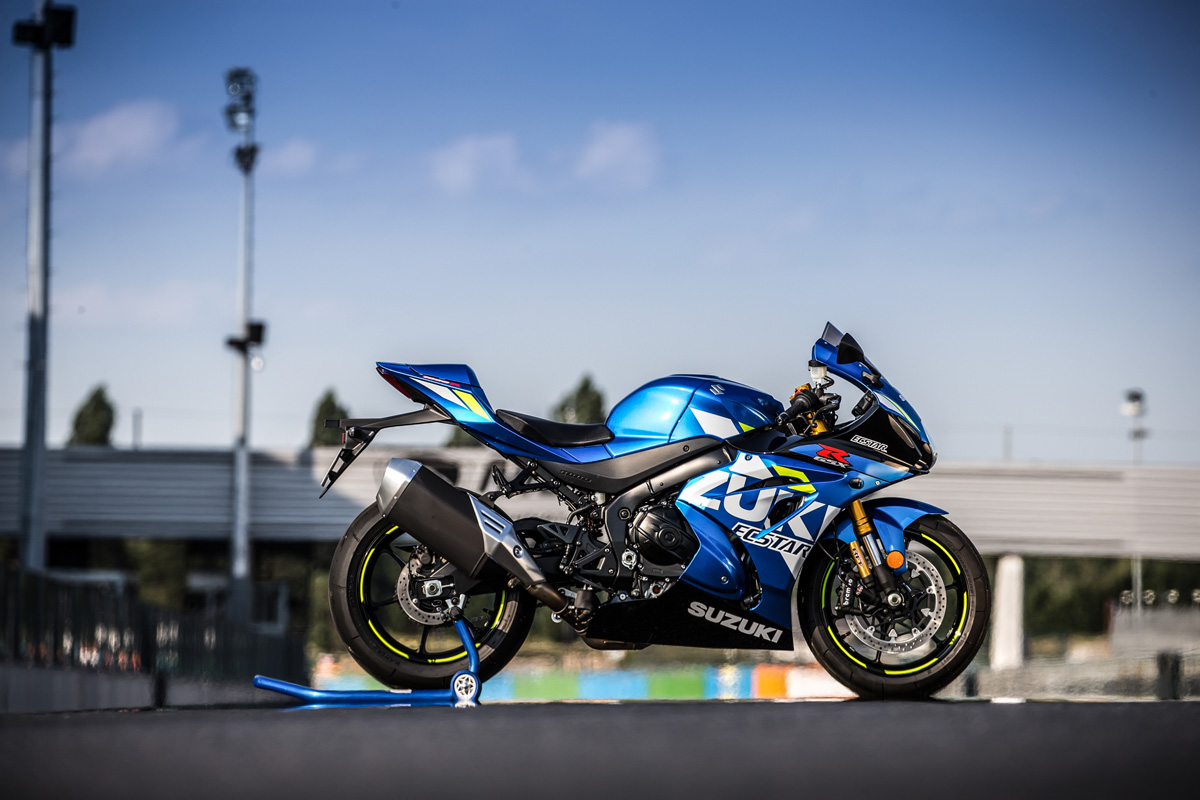
The first thing that comes to mind is that GSX-R’s have always been great bikes. They have always been; friendly, easy and powerful Superbikes that are fantastic to ride. They are also usually well priced too. More than that, lately, the GSX-R has remained one of the most versatile Superbikes that can handle daily use, long trips and track-days like no other competitor.
Racing spirit
Saying this, however, the so-called competition is becoming more and more radical. I’ve had the pleasure of testing the Aprilia RSV4 1100 Factory and the Ducati Panigale V4 S, and they don’t pretend to be as friendly as the GSX-R. These bikes have been designed to win actual races, which have been derived from previous racing bikes and let me tell you, that makes a hell of a difference.
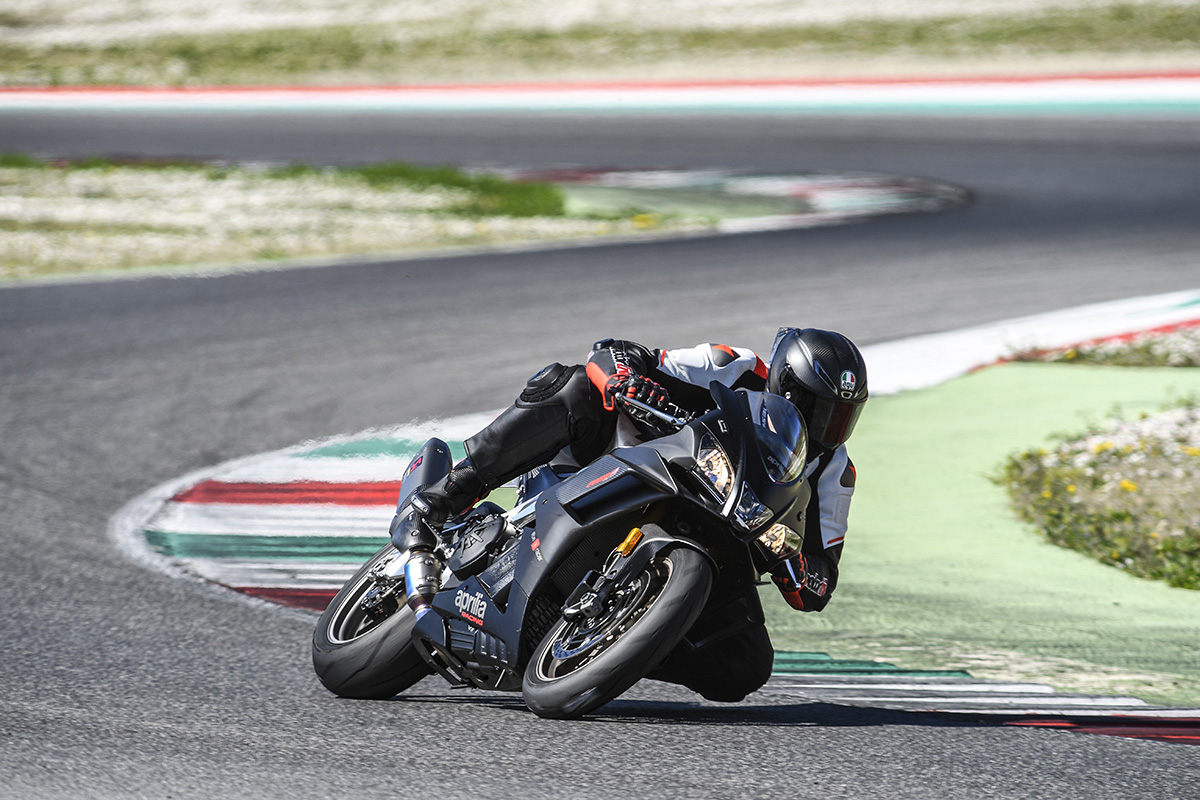
I’ve always been fascinated to see how the “Average Joe” finds his own bike perfect and cannot bear any criticism of his pride and joy. The fact is, the 2008 economic crisis had deeply affected the bike industry at large. During these times Suzuki had stopped with some of their development projects, and when they came back, the competition was far ahead. So, the current GSX-R generation has managed to reach the standard level but has not really outperformed the competition, despite a VVT engine with first-class power and torque. The other fact is, the braking ability was not as top-notch as it’s peers. Nothing wrong for road use, but not as good for aggressive track-day riders.
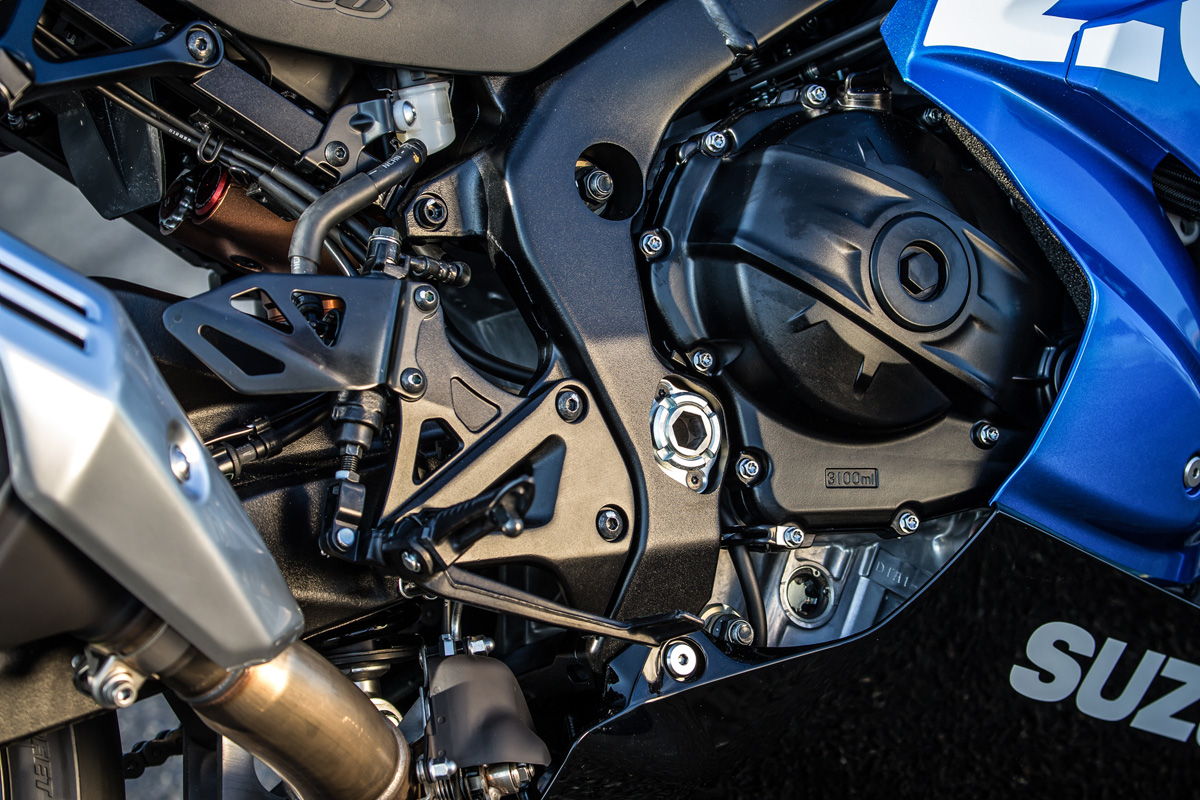
Having said that, let’s move on to what’s new on the 2019 GSX-R 1000 R. Cosmetic changes won’t be that easy to notice: there is now a black section around the air intakes on either side of the headlight.
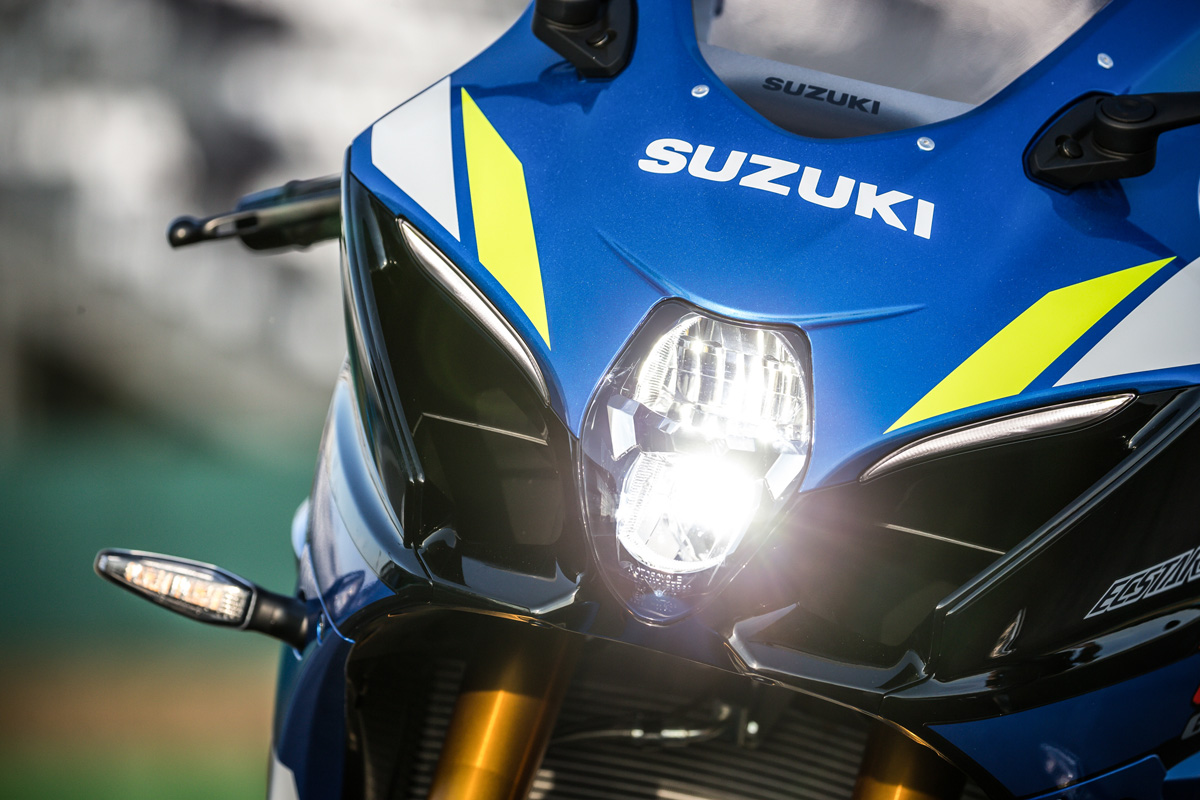
The exhaust is also new and comes with a black finish; which is less susceptible to scratches from riding boots. Sound damping dictates that it is the same huge volume as before, but typically a Superbike’s exhaust is the first thing to be replaced.
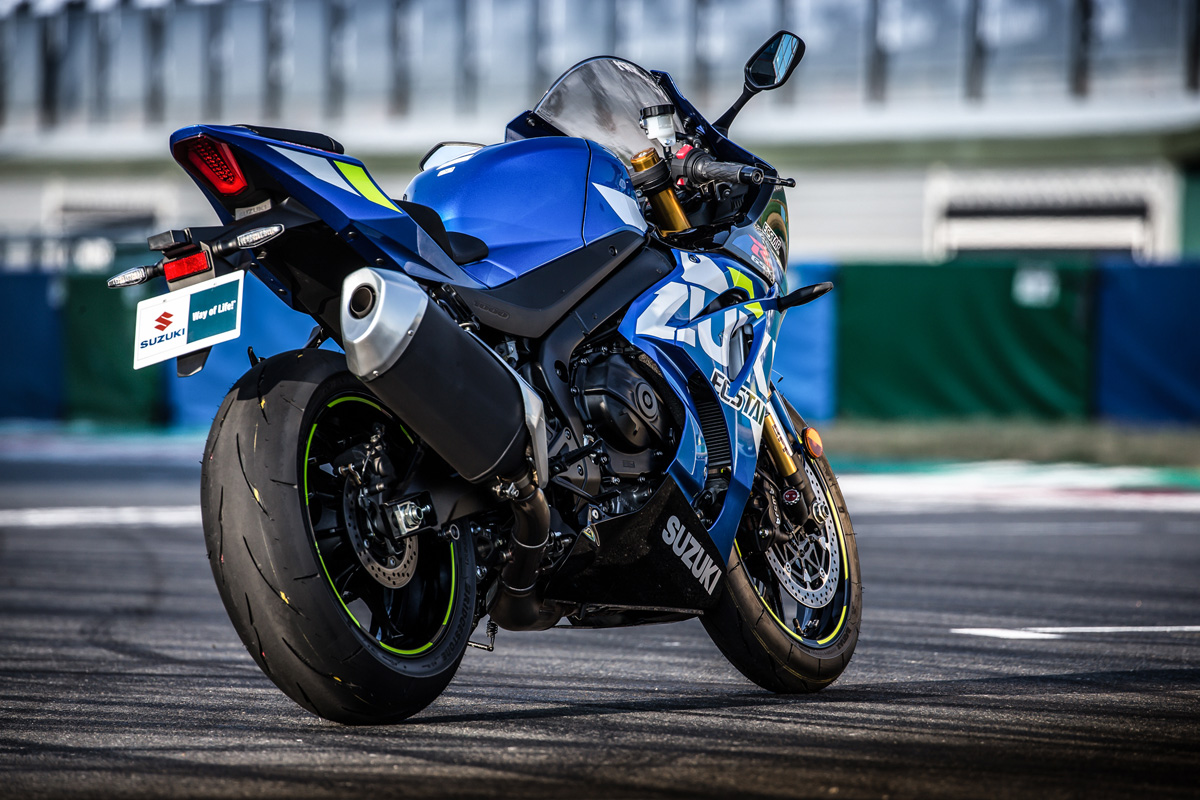
Ergonomic changes are also not that easy to spot: the fuel tank has been slightly redesigned, as the upper part is lower by 21 mm, which makes the tucked-in riding position easier than before.
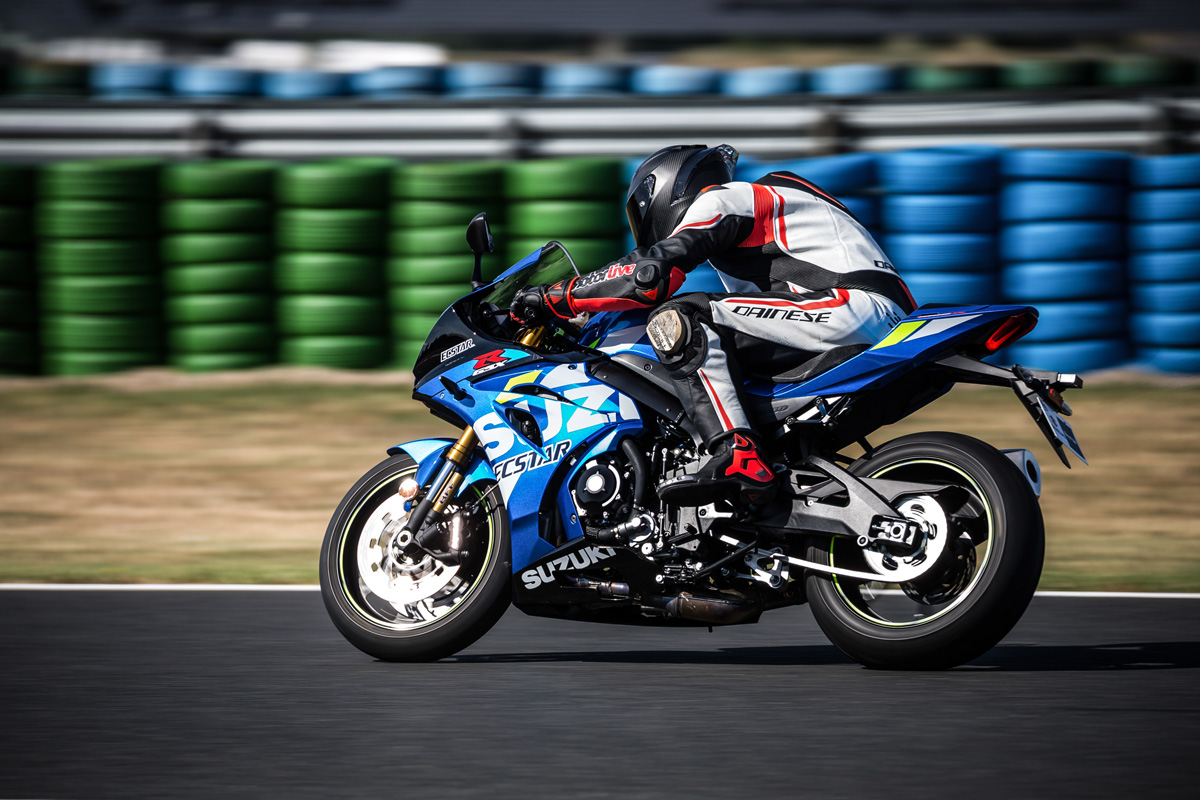
“Braid” and butter
To be more competitive and more efficient, the GSX-R 1000 R offers two chassis evolutions. The first one is a two-position swing-arm linkage, that can affect the bike’s balance between agility and stability and that can be changed depending on the nature of the race-track you are riding or racing. We did not change these modifications during the test, and to be honest, I’m not quite sure that I am qualified to notice this kind of evolution, as the gap between the two positions is less than a centimetre.
The other, easier to notice evolution, lies in the new stainless steel braided brake hoses which, in 2019, can be considered as pretty much standard setup for any wannabe Superbike. So, we can shout “at last!”, the 2019 GSX-R 1000 R has it fitted as part of its standard setup.
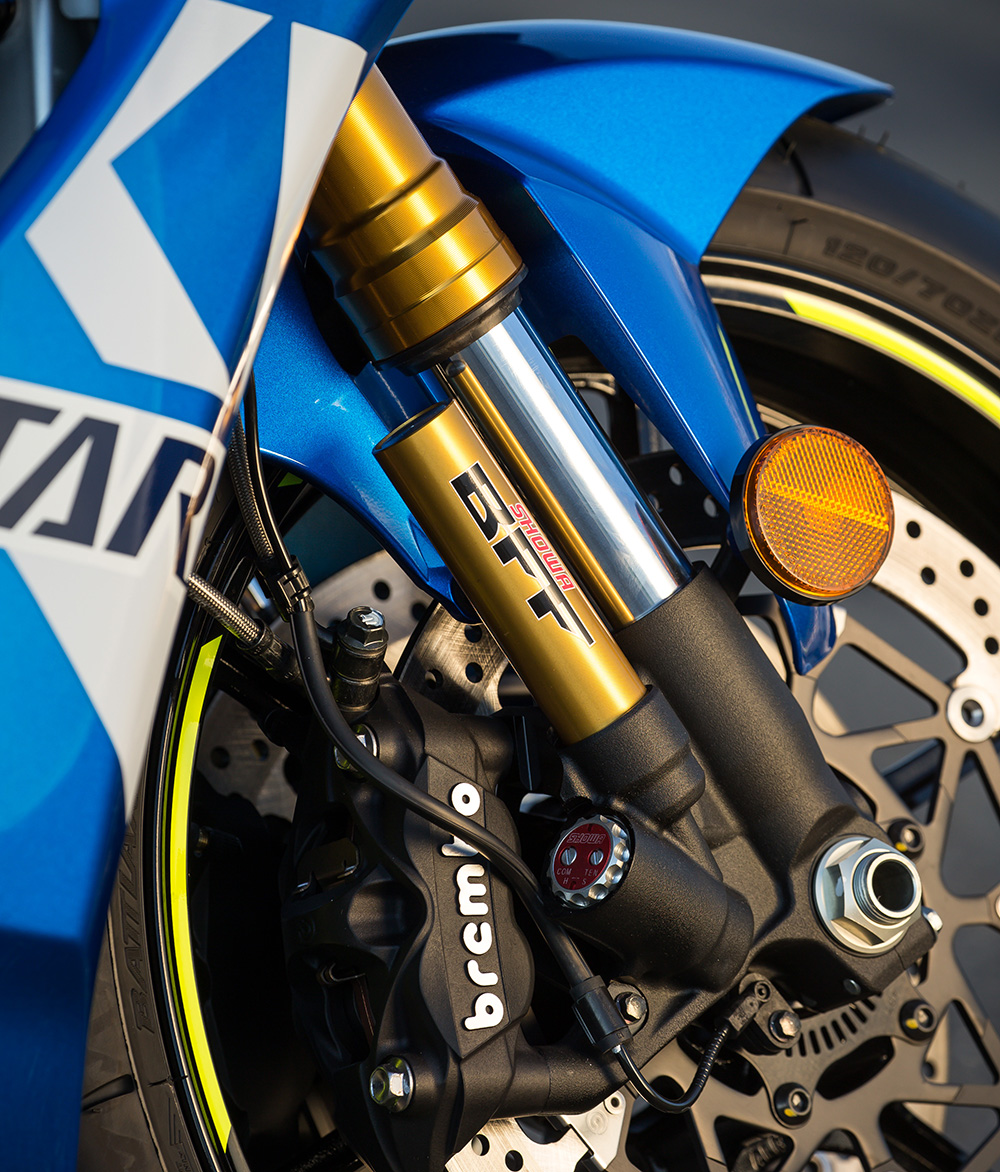
This is when I come back to liking, or not liking, Magny-Cours racetrack. Simply because it was built in the “French middle of nowhere” (Welkom seems posh compared to it) and it was designed by borrowing some other famous features from other racetracks. This is why the fastest section is actually not the pit straight, but a three-part section going from “Estoril” (which is, like on the Portuguese track, a very long, third gear, right-hand corner) to Adelaide (a hard braking section where you move from top speed to a first gear, right-hand corner).
The Magny-Cours racetrack becomes my playground for the day. Whilst out on track testing the GSX-R 1000 R, tirelessly repeating the same hard braking regimen, using the same braking points, when the speedo indicates between 275 to 280 km/h, in fifth gear. It hit me that there are two main points to discuss on this bike.
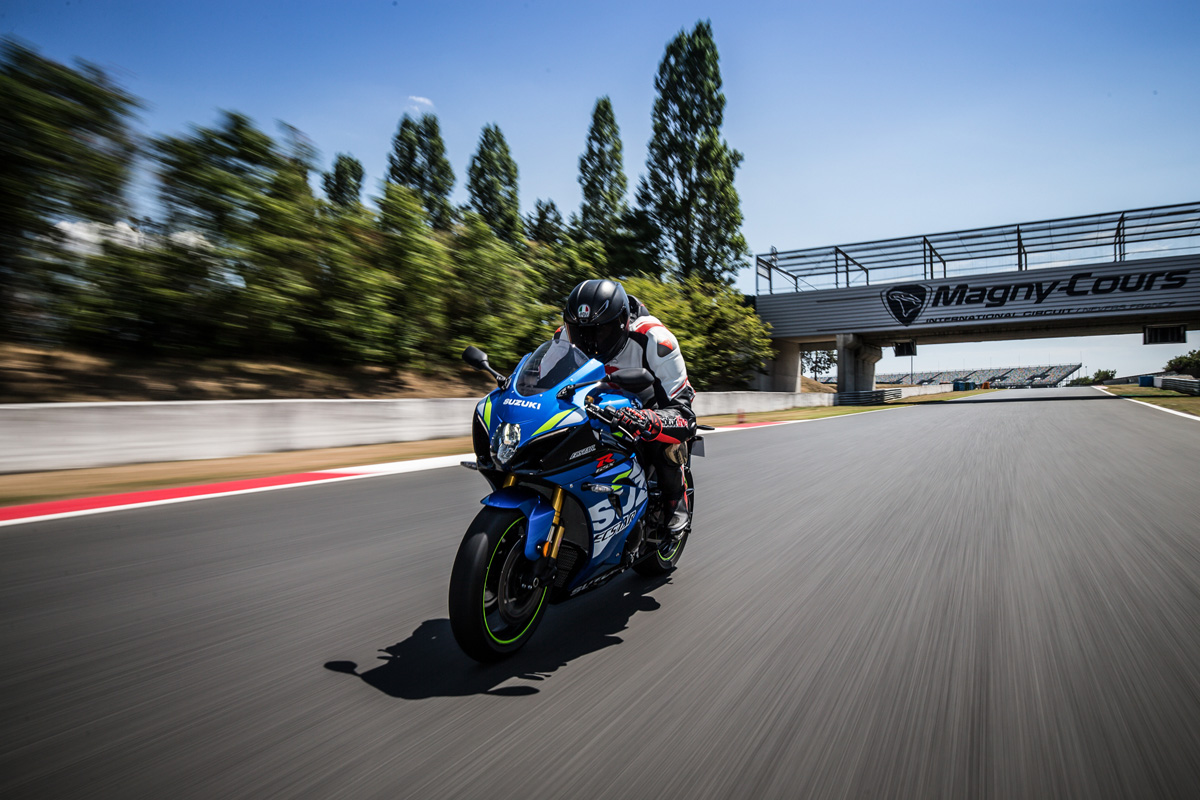
The first point is: the VVT engine is very strong and with a broader power band than a ZX-10R and even the R1. From the natural riding position to the neutral handling, the GSX-R 1000 R remains, in my opinion, definitely the easiest Superbike to get along with, even when you utilise all of the 202 horsepower. From the very first session, I felt immediately at home, as the GSX-R 1000 R is not a Superbike you struggle to understand, such as with some Italian V-Twins, and you also don’t have to push that hard to find that you are already doing proper lap times.
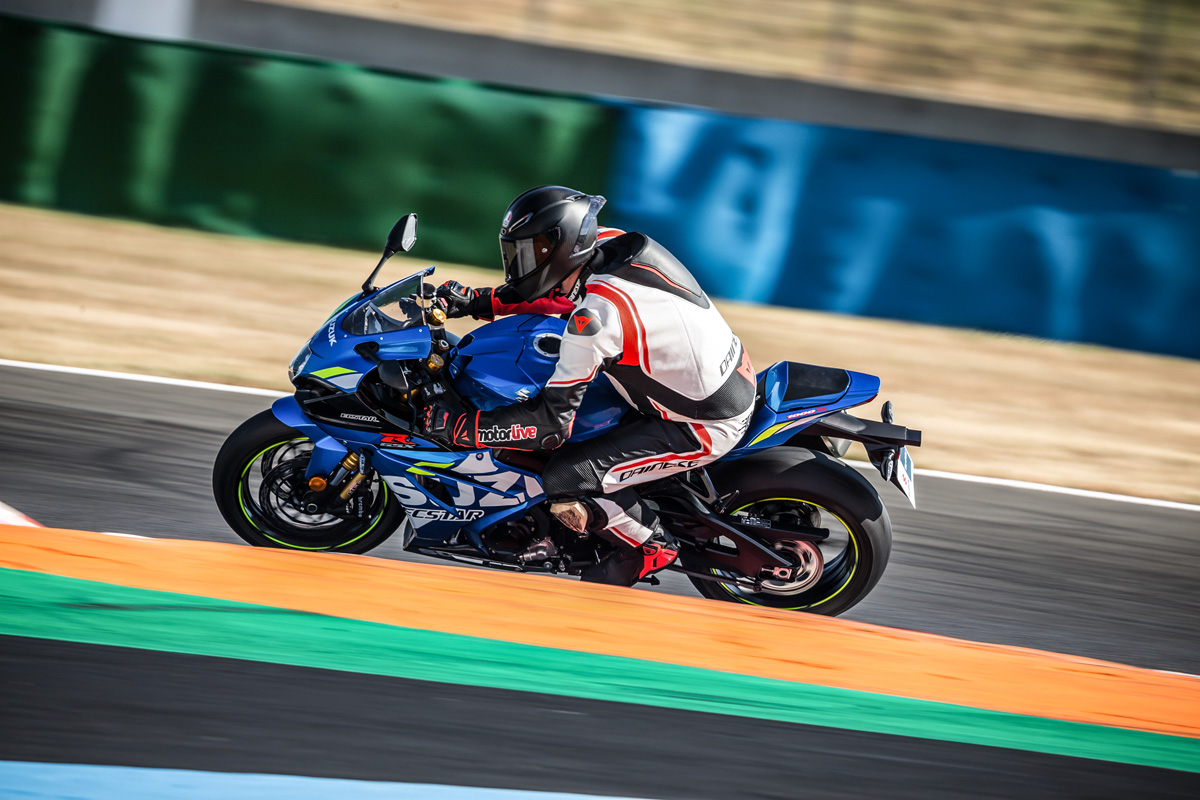
The second point is the brakes. I remember, on previous GSXR’s, the scary feeling of the brake lever nearly touching the throttle at the end of the Castellet straight at Paul Ricard, which hosts the Bol d’Or 24 hour endurance race. This is not so on the new bike.
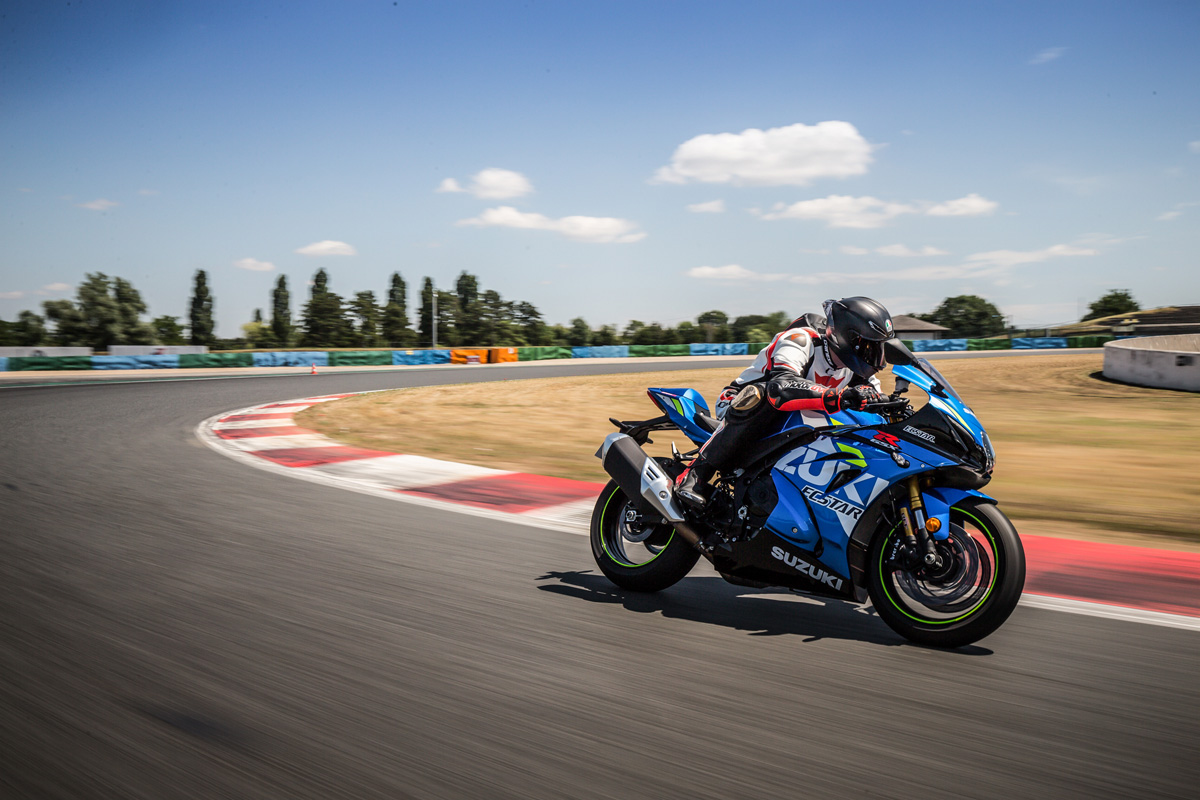
Easy and natural, strong and powerful, forgiving (thanks to the 10 levels traction control), the GSX-R 1000 R is now better when it comes to braking and that’s a pretty good thing. Whilst the new ‘Gixer might not be as exhilarating as some of the competition, particularly the Italians, it’s a much better all-rounder and after all bikes should be ridden as much as they can. Right?
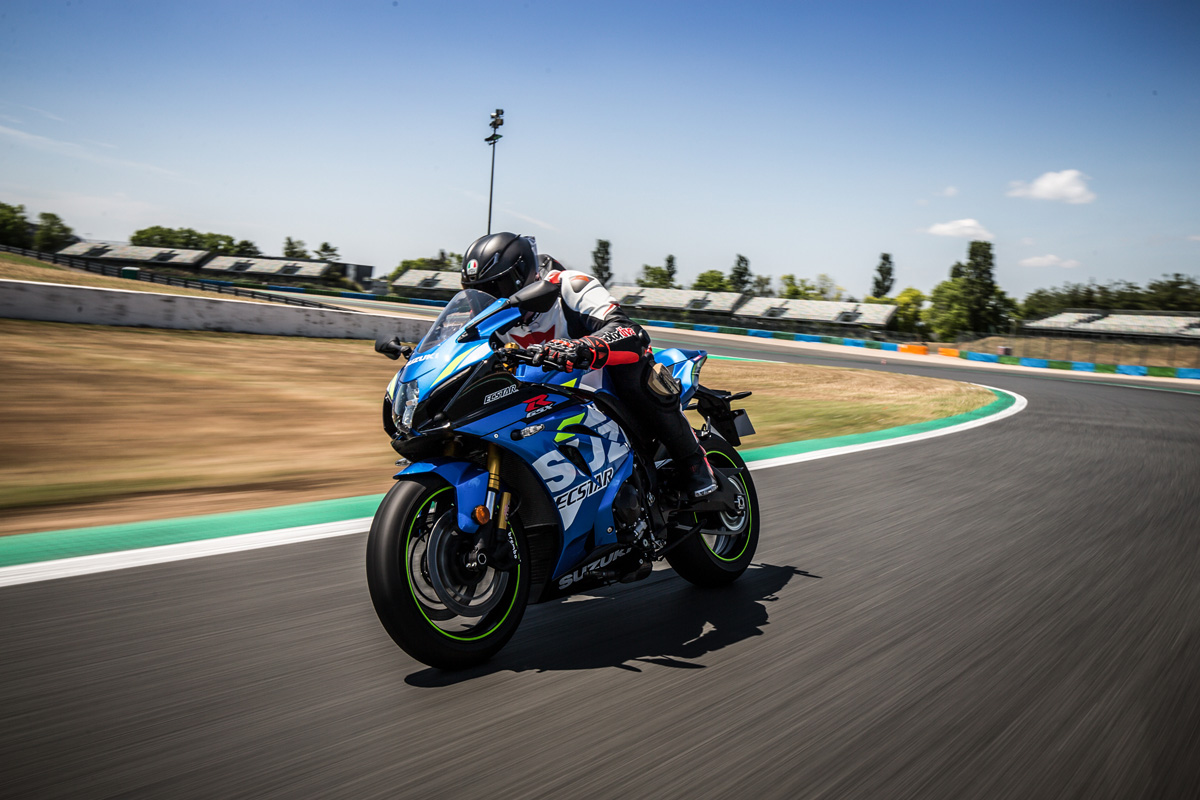
It should be noted that the standard GSX-R 1000, does not have the brake and chassis improvements, as opposed to the R model, but it does have the “up and down” quick shifter that was previously found only on the “R” version.
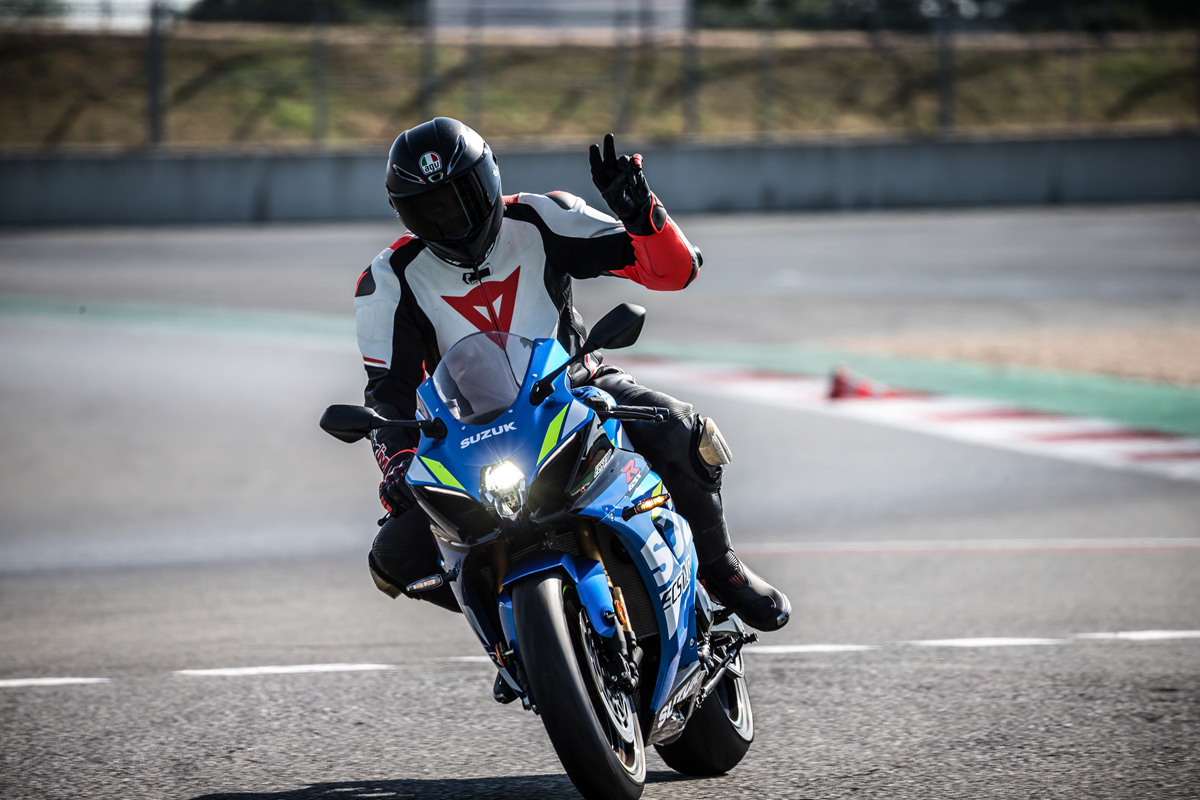
All in all the R is a highly competent all-rounder that is likely to win many fans and find favour with those who appreciate the way Suzuki do things.
For more information visit: www.suzukimotorcycle.co.za
Suzuki GSX-R1000/R
For more information on the bike that we tested in this article, click on the link below…





